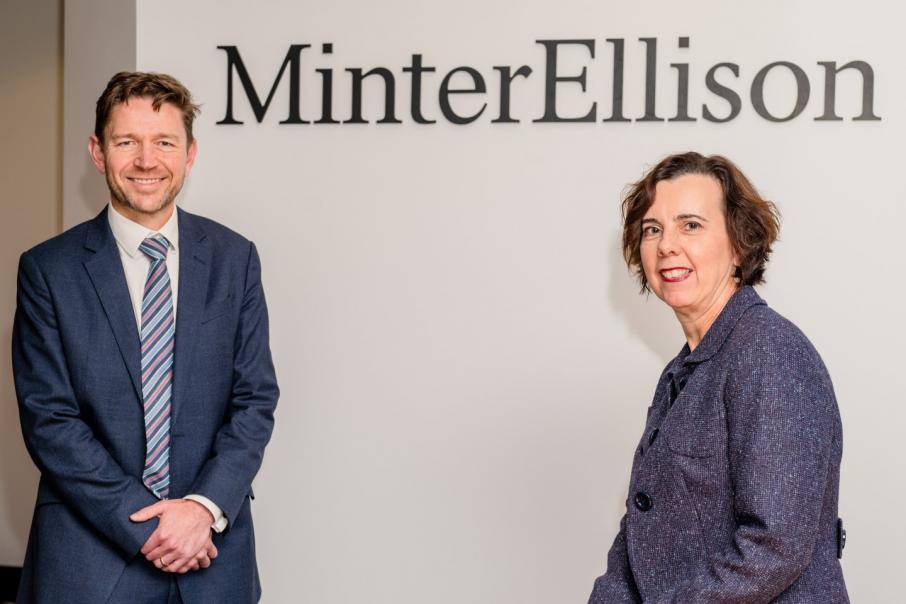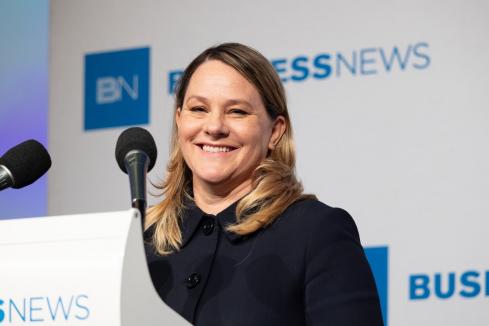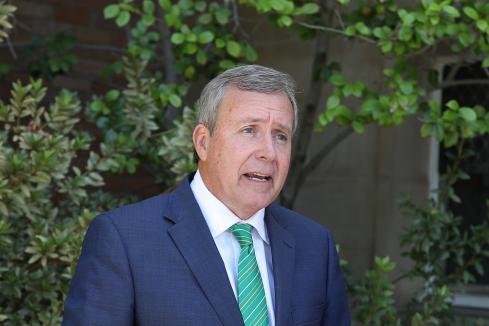Managing safety in the workplace has never been more challenging and the risks never higher, as psychosocial hazards gain more attention.


Workplace safety has rarely been at the top of the list when companies have drawn up their agenda for board meetings.
In many cases it has not been on the agenda at all.
But with an increasing focus on issues such as sexual harassment, bullying, and COVID-19, that is changing.
“They are creating very significant attention at board level,” Squire Patton Boggs partner Bruno Di Girolami said.
“It’s one of the main issues facing many companies.”
King & Wood Mallesons partner Ruth Rosedale says workplace health and safety should have always been on the board agenda.
Now it’s getting much more attention as it encompasses a wider range of issues.
“The concept of what health and safety encompasses now is broader than what most people would normally expect,” Ms Rosedale told Business News.
“The remit of boards on health and safety has certainly grown exponentially.”
The increased focus reflects the national political debate over sexual assault in the workplace, fuelled by the alleged rape of political staffer Brittany Higgins.
The landmark Respect@Work report also served to lift awareness of sexual harassment as a workplace issue.
“Our most recent survey conducted in 2018 showed that sexual harassment in Australian workplaces is widespread and pervasive,” the report found.
“One in three people experienced sexual harassment at work in the past five years.”

Recent reports of sexual assaults in fly-in, fly-out mining camps, along with the inquiry launched by the Western Australian parliament, have added to the focus on this issue.
The Australian government’s response includes the Sex Discrimination and Fair Work (Respect at Work) Amendment Bill, which has introduced some significant changes.
Another big legislative change is the Work Health and Safety Act, which has passed through the WA parliament and is due to take effect at the start of 2022 when the associated regulations are completed.
The new Act brings a wider scope to workplace health and safety and introduces much tougher penalties.
That’s on top of the increased penalties introduced in 2018, which have been reflected in the fines and jail sentences being handed down by WA courts this year for workplace safety breaches.
Layered on top of all these changes is the continuing risk of COVID-19 infections and the unresolved debate over whether employers can mandate compulsory vaccination of their staff.
MinterEllison partner Kathy Reid has spent most of her career advising on workplace relations issues.
She has seen some big shifts in the past year.
“Treating sexual harassment as a safety issue is groundbreaking,” Ms Reid said.
“It destigmatises it and makes it easier for people to deal with it.” However, she remained frustrated that sexual harassment was still seen as solely an issue for women.
“A lot of the investigations we are doing around sexual harassment involve men as the victims,” Ms Reid said.
She said two types of behaviour were rife in the mining industry: people sending each other objectionable memes, and men touching other men to make them feel uncomfortable.
“That behaviour is really prevalent,” Ms Reid told Business News.
“If you look at it just as a women’s issue, it perpetuates a bit of the stigma about sexual harassment.
“If you look at it more broadly, and look at it through the safety lens, and get to those cultural issues and people being demeaning to others, that gets to the root cause of the behaviours.”
Ms Reid’s observation is backed up the Australian Human Rights Commission’s 2018 survey, which included a sample of about 10,000 people.
It found 39 per cent of women and 26 per cent of men had experienced workplace sexual harassment in the previous five years.
For both women and men, the most common type of workplace sexual harassment was offensive, sexually suggestive comments or jokes.
The 2018 survey found very wide variations across industries.
The worst was IT, media, and communications, where an extraordinarily high 81 per cent of employees experienced sexual harassment in the past five years (see table).
The best sector was real estate, at just 13 per cent.
Mining, which has attracted a big focus, sat at 40 per cent; that’s above average, and about the same as retail and financial services.
When the data is broken down by gender, the result for mining is much worse.
The survey found that 74 per cent of women in mining (and 32 per cent of men) had experienced sexual harassment; that’s the second worst result for women.
It’s a similar story for transport and construction.
A low proportion of men experienced sexual harassment but about half of the female employees in both sectors had experienced sexual harassment.
The 2018 survey contains the best data on workplace sexual harassment, but needs to be treated with a degree of caution.
“There is little consistency in the collection, monitoring and reporting of data on workplace sexual harassment by anti-discrimination and other regulatory agencies,” the Respect@ Work report said.
It also found that reporting of workplace sexual harassment was low.
Only 17 per cent of people who experienced sexual harassment at work in the past five years made a formal report or complaint about the harassment.
The board role
Ms Rosedale said there had been a shift in the discourse on sexual harassment.
“There has been a real refocusing on board responsibilities, including respectful workplace behaviours,” she said.
“There is a growing expectation that boards take primary responsibility and accountability for making sure there is a governance framework for sexual harassment.
“Directors need to get across that expectation.”
Ms Rosedale said employers were also realising they needed to be much less reactive and have a greater focus on prevention and response.
Her own career reflects the changing nature of workplaces.
She recently became the first person to be made partner at King & Wood Mallesons in Perth while working three days a week.
Reflecting on what constitutes sexual harassment, Ms Rosedale said managers needed to be attuned to how others might see things.
“People need to be conscious that what is acceptable to them may not be acceptable to everybody else in their workplace,” she said.
“Education is at the heart of it and that dovetails back to management taking a lead on developing the culture it wants, having appropriate policies and training.”

Ruth Rosedale says employers need to be more proactive. Photo: David Henry
New legislation
The Sex Discrimination and Fair Work (Respect at Work) Amendment Bill, which is currently under review in the Senate, has proposed some major changes.
It provides that a worker who is sexually harassed at work may apply to the Fair Work Commission for an order to stop the harassment.
MinterEllison partner Craig Boyle said this would provide a faster mechanism for dealing with complaints compared with more cumbersome processes currently available through the Australian Human Rights Commission and the Equal Opportunity Commission.
He said the Fair Work Commission would be able to make an order following a single instance of sexual harassment.
It will also provide that perpetuating sexual harassment in a workplace can be a valid reason for dismissal.
Mr Boyle said the Bill also widened the coverage beyond traditional workplaces and employees.
It refers to ‘persons conducting a business or undertaking’ and extends coverage to all paid and unpaid workers, including volunteers, interns, and the self-employed.
Ms Reid said company officers, including non-executive directors, needed to be aware they had due diligence obligations regarding workplace health and safety (WHS).
This obligation already applies under national WHS laws and will apply once WA’s new WHS Act takes effect.
Ms Reid strongly encouraged all company officers to take this seriously, for instance by ensuring they had policies and systems in place.
“They need to be forward looking, not just backward looking,” she said.
She also cautioned that, under new legislation, safety inspectors would have the capacity to come into a workplace without an incident being reported and start conducting a review.
Government regulators have released several guides and codes to help employers stay abreast of changes in the sector.
Most recently, WA’s Commission for Occupational Health and Safety released a draft code of practice on psychosocial hazards in the workplace.
This encompasses psychological and social hazards such as inappropriate behaviours, violence and aggression, fatigue, burnout, stress, and trauma.
WorkSafe Western Australia commissioner Darren Kavanagh said all people in a workplace had a duty to prevent or minimise hazards.
“Managing psychosocial hazards can be challenging, so a proactive and comprehensive approach is needed, and effective consultation and communication are critical,” he said.
COVID-19 issues
The onset of the COVID-19 virus has created a whole new set of WHS challenges for employers.
Most topical is the question of whether employers can mandate compulsory vaccinations for their staff.
A recent King & Wood Mallesons survey of its clients found an overwhelming majority (81.6 per cent) support employers having the right to mandate COVID-19 vaccinations.
Half this group thought employers should have this right in all circumstances, while the same proportion thought only employers in high-risk industries such as health care should be able to do so.
Despite this strong sentiment, legal uncertainty has meant very few employers have taken this step.
The Fair Work Ombudsman issued advice earlier this month on circumstances where an employer may deem vaccinations to be mandatory.
It had previously said most employers would not be able to mandate vaccinations.
Its updated guidance focused on the question of whether mandating vaccinations was legal and reasonable.
The answer would depend on the type of work involved, the amount of contact between staff and others, and the incidence of community transmission.
For instance, mandating vaccinations for workers in quarantine, border control, health and aged care was “more likely to be reasonable”.
Similarly, mandating vaccines was “more likely to reasonable” in cases where community transmission was occurring, and a business needed to stay open through a lockdown.
The guidance prompted Australia’s peak union and employer bodies – the ACTU and the Business Council of Australia – to take the unusual step of issuing a joint statement.
They said for most Australians, COVID-19 vaccinations should be free and voluntary. For any exceptions to this, where mandatory vaccinations were deemed necessary, they called for governments and the national cabinet to issue public health orders.
“Employers and unions recognise that for a small number of high-risk workplaces there may be a need for all workers in a workplace to be vaccinated to protect community health and safety,” they said.
“These are serious decisions that should not be left to individual employers and should only be made following public health advice based on risk and medical evidence.”
Chamber of Commerce and Industry of WA chief executive Chris Rodwell said the Fair Work Ombudsman’s advice reinforced the need for employers to seek advice about the issue of mandatory vaccinations.
“Efforts by the ombudsman to provide general advice on mandatory vaccines really only highlight how uncertain the issue is for business,” he said.
Ms Reid agreed the guidance was not very helpful.
“There are a whole lot of layers to this,” she said.
“What if you can’t get access to the vaccine, and what if you can’t take the vaccine for perfectly valid reasons?
“That’s the bit that is missing.”
She said public health orders would be helpful, but employers would still be required to complete individual risk assessments.”
Squire Patton Boggs’ Mr Di Girolami said two recent unfair dismissal cases provided some guidance.
They concerned employees in child care and aged care who had been dismissed after refusing to get flu vaccines.
In both cases, the unfair dismissal claim was not upheld because the individuals were unable to provide compelling medical evidence to support their refusal.
New awards
The wider ambit of WHS is reflected in the activities of the Perth-based not-for-profit group, Industrial Foundation for Accident Prevention (IFAP).
Its full name points to the original focus of WHS, on the management and prevention of physical accidents and hazards.
That widened to include physical health, including occupational hygiene.
The more recent focus on psychosocial issues has prompted IFAP to introduce two new categories to its annual awards.
Its health and wellbeing award is targeted at WHS strategies for mental health and psychosocial risks, while its women in safety award targets programs that are directed at improving the health and safety of women in the workplace, including reducing harassment.
Recently appointed managing director Michael Morgan said IFAP had been restructured to suit the changing market.
“We are repositioning for what I call a generational change in work health and safety legislation and management,” Mr Morgan told Business News.
IFAP was seeking to help mid-sized and smaller businesses deal with the many changes.
“They can’t keep up with it, they don’t realise the consequences and they tend to deal with it reactively,” Mr Morgan said.
“We need to do a lot better at communicating what the issues are and how to make sense of it all.”
Mr Morgan highlighted the due diligence obligations under the WHS legislation.
“It’s the company officers – the senior leaders, the chief executives, the CFOs, the directors – all of them have personal responsibilities to ensure the business meets its obligations,” he said.
This includes understanding the WHS risks, identifying mitigation measures, and providing appropriate resources to ensure ongoing monitoring.
“We need to link what happens at the operational level back to the executive management level, by reporting what is happening,” he said
“What helps health and safety the most is to have conversations about it, from senior leaders to middle management and their workers.
“Businesses need to put in place a process where workers can feel comfortable having safety and health conversations.”

Mr Morgan said it was important to recognise all forms of workplace risk, such as the incidence of silicosis among stonemasons who cut kitchen benchtops.
“Many more people die every year, latently, from industrial diseases than die from accidents at work,” he said.
Mr Morgan also highlighted the increased penalties applying in WA.
Like many industry groups in WA, IFAP is concerned about the potential for businesses to be fined up to $10 million and individuals jailed for up to 20 years.
This would apply in the most extreme cases, where gross negligence led to a death in a workplace.
While IFAP wants a greater focus on education, Mr Morgan acknowledges the new penalties may, in a roundabout way, have a positive effect.
“The sheer magnitude of the penalties will get people talking about it and hopefully people will then focus on how they can prevent accidents,” he said.
The proposed penalties under the WHS Act, due to take effect next year, follow substantial increases to the penalties under the existing legislation.
Esperance company MT Sheds and its director, Mark Thomas Withers, were the first to be affected following the 2020 death of a worker and the serious injury of another.
Earlier this year, Mr Withers become the first person to be sentenced to a term of imprisonment under WA’s workplace safety and health laws while the company was fined $550,000.
More recently, O’Connor-based Charman Roofing was fined $450,000 after one of its staff fell seven metres onto a concrete floor during construction of the new museum in Northbridge.
Prior to these two cases, the largest penalty ever handed down for a workplace safety issue was $285,000, imposed on the Department of Corrective Services and contractor G4S Custodial Services in 2011 over a workplace death.
















